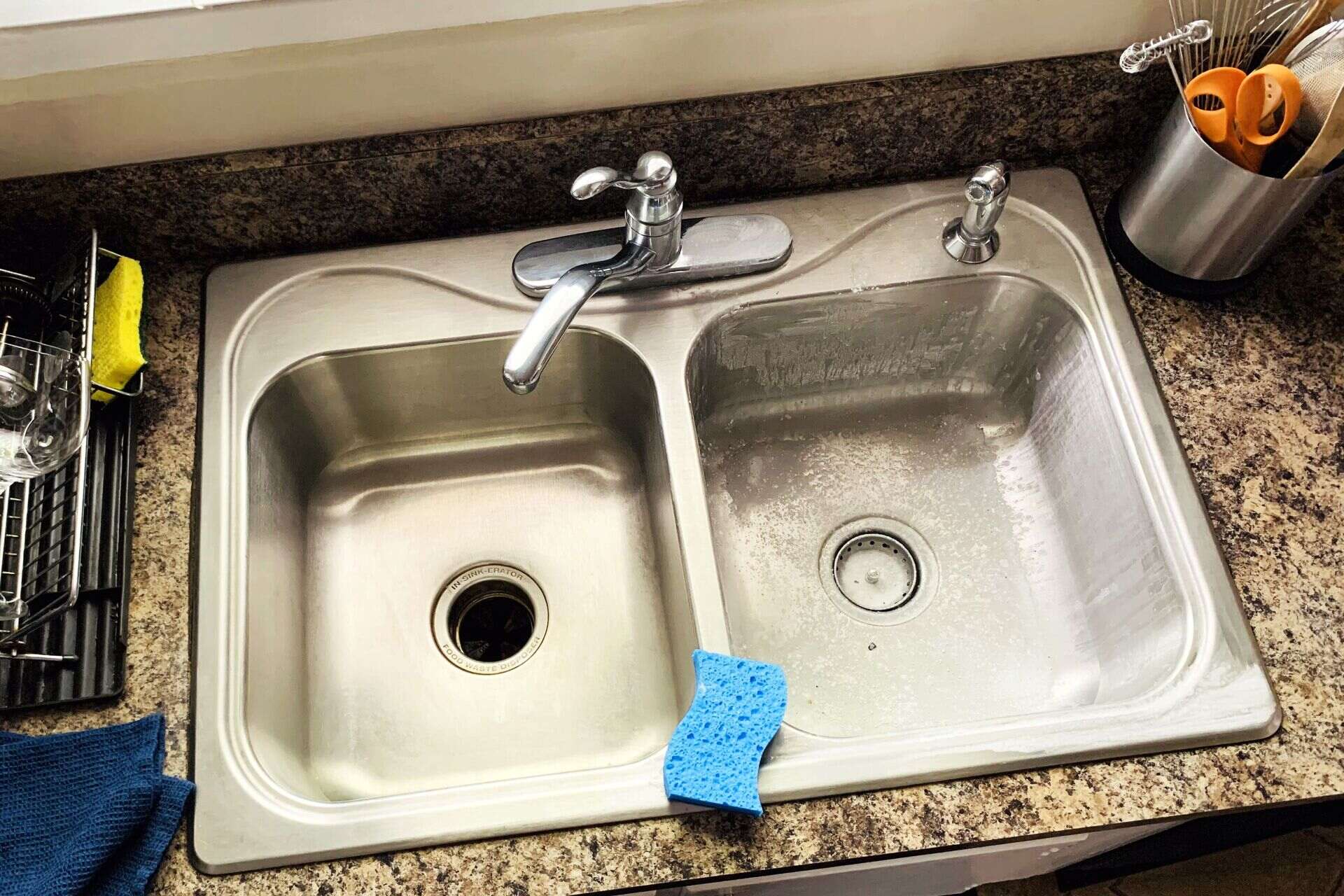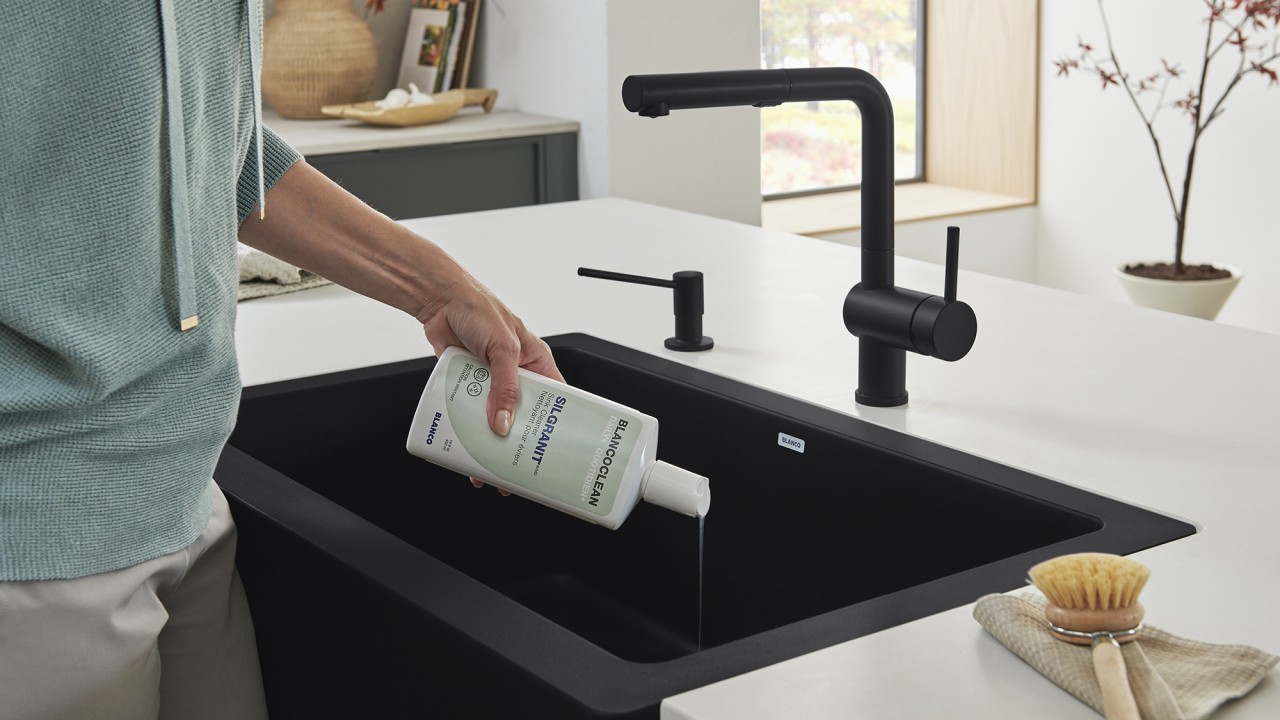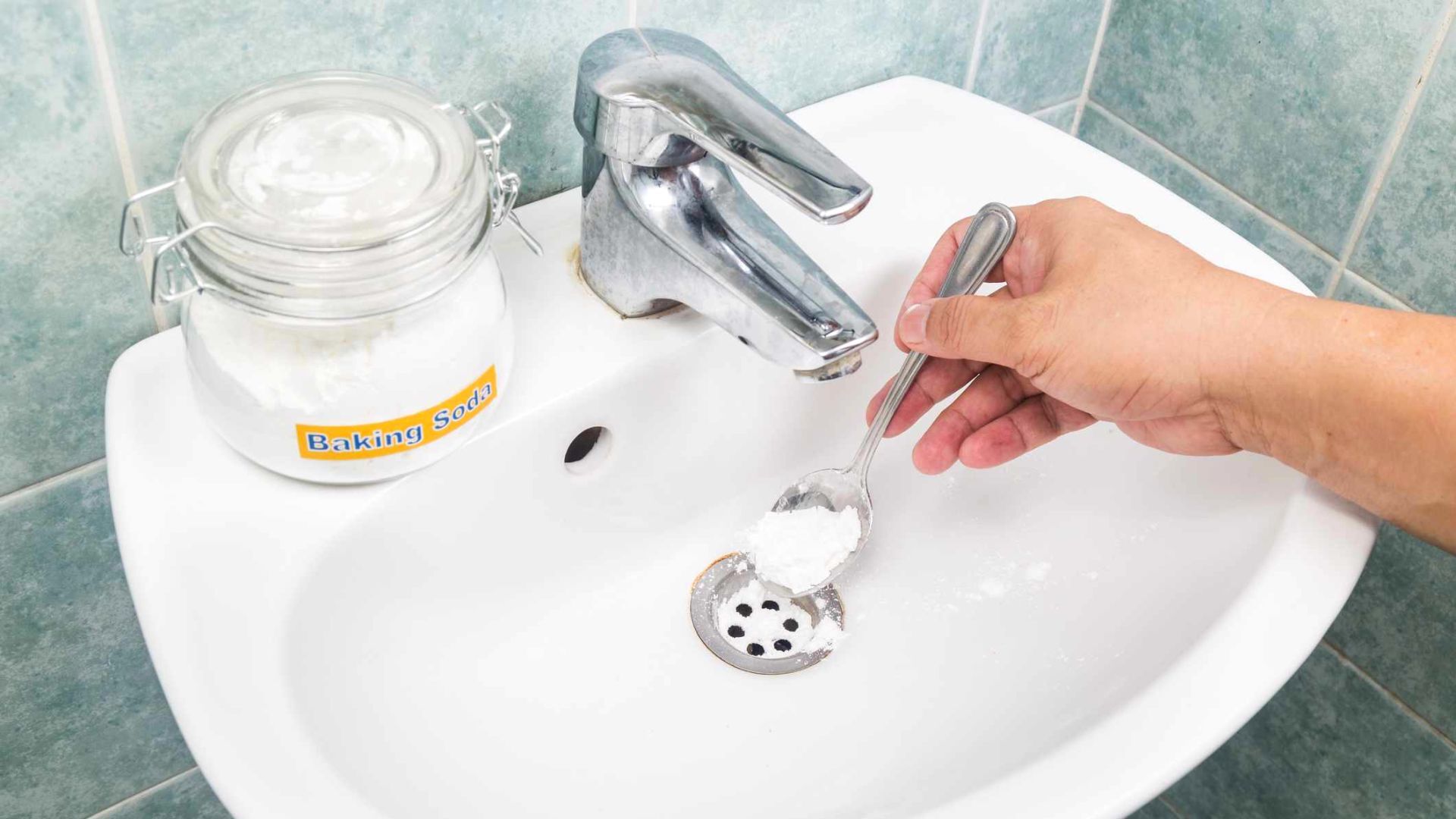

Articles
How To Clean Soapstone Sink
Modified: December 7, 2023
Learn effective methods to clean soapstone sinks with our informative articles. Keep your sink looking pristine with our expert tips and tricks.
(Many of the links in this article redirect to a specific reviewed product. Your purchase of these products through affiliate links helps to generate commission for Storables.com, at no extra cost. Learn more)
Introduction
Soapstone sinks are not only beautiful additions to any kitchen or bathroom, but they are also highly durable and resistant to stains and scratches. However, like any other sink material, soapstone sinks require regular cleaning and maintenance to keep them looking their best. Cleaning a soapstone sink may seem like a daunting task, especially if you are unsure of the proper methods and materials to use. But fear not, as we will guide you through a step-by-step process to clean and restore the natural beauty of your soapstone sink.
Before diving into the cleaning process, it’s important to gather the necessary materials. You will need:
- A soft cloth or sponge
- A mild dish soap or pH-neutral cleaner
- Vinegar or lemon juice
- Water
- Mineral oil or soapstone wax (optional)
Once you’ve gathered all the materials, follow these steps to effectively clean your soapstone sink:
Key Takeaways:
- Keep your soapstone sink looking beautiful and durable by using gentle cleaning methods and natural solutions like vinegar or lemon juice. Regular maintenance will preserve its natural elegance and functionality.
- Gather the necessary materials, remove residue, prepare a gentle cleaning solution, and rinse and dry your soapstone sink thoroughly to maintain its lustrous appearance and prevent damage. Optional polishing can enhance its natural beauty.
Read more: How To Maintain Soapstone Countertops
Materials Needed
Before you begin cleaning your soapstone sink, it’s important to gather all the necessary materials. Here are the items you’ll need:
- A soft cloth or sponge: This will be used to scrub the sink and remove any dirt or residue.
- A mild dish soap or pH-neutral cleaner: Avoid using harsh chemicals or abrasive cleaners, as they can damage the soapstone surface.
- Vinegar or lemon juice: These natural acidic substances are effective in removing stains and disinfecting the sink.
- Water: Use warm water for best results.
- Mineral oil or soapstone wax (optional): These products can be used for polishing and enhancing the natural luster of the soapstone sink.
By having these materials ready, you’ll be well-prepared to effectively clean your soapstone sink and maintain its beauty and functionality.
Step 1: Removing Any Residue
Before you start the actual cleaning process, it’s important to remove any residue from the surface of your soapstone sink. This includes food particles, soap scum, or any other debris that may have accumulated over time.
To remove residue, start by using a soft cloth or sponge soaked in warm water. Gently wipe down the surface of the sink, making sure to pay attention to all areas, including corners and crevices. Avoid using abrasive scrub brushes or scouring pads, as they can scratch the soapstone surface.
If you encounter stubborn residue that won’t come off with water alone, you can use a mild dish soap or pH-neutral cleaner. Apply a small amount of the soap to the cloth or sponge and gently scrub the affected areas. Rinse the sink thoroughly with warm water to remove any soap residue.
Once you have successfully removed all visible residue from the soapstone sink, you are ready to move on to the next step: preparing the cleaning solution.
Step 2: Preparing the Cleaning Solution
After removing any residue from your soapstone sink, it’s time to prepare a cleaning solution that is safe and effective for your sink’s surface.
For a gentle yet powerful cleaning solution, you can create a mixture of warm water and either vinegar or lemon juice. Both vinegar and lemon juice are natural acidic substances that work well to break down stains and disinfect the sink.
To prepare the cleaning solution, follow these steps:
- Fill a bucket or basin with warm water.
- Add a small amount of vinegar or lemon juice to the water. The ratio should be approximately one part vinegar or lemon juice to three parts water.
- Stir the mixture gently to ensure the vinegar or lemon juice is evenly distributed in the water.
If you prefer not to use vinegar or lemon juice, you can also use a mild dish soap or pH-neutral cleaner mixed with warm water. However, avoid using harsh chemicals or abrasive cleaners that can damage the soapstone surface.
Once you have prepared the cleaning solution, you are ready to move on to the next step: applying the cleaning solution to the soapstone sink.
Step 3: Applying the Cleaning Solution
With the cleaning solution prepared, it’s time to apply it to your soapstone sink and let it work its magic. This step will help to break down stains, disinfect the surface, and remove any lingering dirt or grime.
To apply the cleaning solution, follow these steps:
- Dampen a soft cloth or sponge with the cleaning solution.
- Gently scrub the entire surface of the soapstone sink, using circular or back-and-forth motions.
- Pay special attention to any stained or heavily soiled areas. You may need to let the cleaning solution sit on these areas for a few minutes to allow it to penetrate and loosen the stains.
- Continue scrubbing until you have covered the entire surface of the sink.
Remember to be gentle while applying the cleaning solution to avoid scratching the soapstone surface. If you encounter stubborn stains that won’t come off, you can use a soft-bristled brush or toothbrush to scrub the area gently.
Once you have thoroughly applied the cleaning solution and scrubbed the sink, you are ready to move on to the next step: rinsing the sink.
To clean a soapstone sink, use a mild dish soap and warm water with a soft cloth or sponge. Avoid abrasive cleaners or pads to prevent scratching the surface. Dry the sink thoroughly after cleaning to prevent water spots.
Read more: How To Clean A Brass Sink
Step 4: Scrubbing Gently
Now that you have applied the cleaning solution to your soapstone sink, it’s time to focus on gently scrubbing the surface to remove any remaining dirt, stains, or residue. This step is essential in restoring the natural beauty of your sink and ensuring a thorough clean.
When scrubbing your soapstone sink, keep the following tips in mind:
- Use a soft cloth, sponge, or soft-bristled brush to scrub the sink.
- Avoid using abrasive scrub brushes or scouring pads, as they can scratch the soapstone surface.
- Apply gentle pressure while scrubbing to avoid damaging the sink.
- Focus on stained or heavily soiled areas and scrub in circular or back-and-forth motions to lift the dirt and stains.
Continue scrubbing the entire surface of the soapstone sink until you are satisfied with the cleanliness. If necessary, you can reapply the cleaning solution to stubborn stains and repeat the gentle scrubbing process.
Remember to take your time and be patient while scrubbing. Soapstone is a durable material, but it still requires gentle care to maintain its pristine condition.
Once you have finished scrubbing the sink, it’s time to move on to the next step: rinsing the sink thoroughly.
Step 5: Rinsing Thoroughly
After scrubbing your soapstone sink, it’s crucial to rinse it thoroughly to remove any traces of the cleaning solution, dirt, or grime. This step will ensure that your sink is left squeaky clean and free from any residue that could potentially affect its appearance or hygiene.
To rinse your soapstone sink effectively, follow these steps:
- Use clean, warm water to rinse the entire surface of the sink. You can either use a cloth or sponge soaked in water or simply run water directly from the faucet.
- Thoroughly rinse any areas where you applied the cleaning solution, focusing on ensuring that there are no soapy or vinegar/lemon juice residues left behind.
- Continue rinsing until the water runs clear and there are no visible traces of the cleaning solution or dirt.
It’s important to be thorough in the rinsing process to prevent any residue from drying on the soapstone surface. Residue left behind can affect the appearance of the sink and may require additional cleaning in the future.
Once you have finished rinsing the sink, move on to the next step: drying the sink properly.
Step 6: Drying the Sink
After thoroughly rinsing your soapstone sink, it’s important to properly dry it to prevent water spots and maintain its lustrous appearance. Drying the sink will also prevent the accumulation of moisture that can lead to the growth of bacteria or mildew.
Follow these steps to effectively dry your soapstone sink:
- Use a clean, dry cloth or towel to wipe down the entire surface of the sink. Be sure to pay attention to corners and crevices where water may accumulate.
- Avoid using rough or abrasive cloths that can scratch the soapstone surface. Opt for a soft, lint-free cloth that will gently absorb the water.
- If necessary, you can also use a hairdryer on a low heat setting to dry hard-to-reach areas or to speed up the drying process. Keep the hairdryer at a safe distance from the sink to avoid overheating or damaging the soapstone.
- Ensure that all moisture is completely removed from the sink, leaving it dry and shiny.
Properly drying the sink will help maintain its natural beauty and prevent the formation of water spots or streaks. It’s a simple yet crucial step to complete the cleaning process.
Once you have dried the sink, you can move on to the optional step of polishing the soapstone to further enhance its appearance and protection.
Step 7: Polishing (Optional)
Polishing your soapstone sink is an optional step that can enhance its natural beauty and protect the surface from stains and water damage. While soapstone is inherently resistant to most stains and scratches, polishing can help bring out its unique veining and add a subtle sheen.
If you choose to polish your soapstone sink, follow these steps:
- Ensure that the sink is clean and dry before starting the polishing process.
- Apply a small amount of mineral oil or soapstone wax to a soft cloth or sponge.
- Gently rub the oil or wax onto the entire surface of the sink in circular motions. Be thorough in covering all areas, including corners and edges.
- Allow the oil or wax to sit on the surface for a few minutes to penetrate and nourish the soapstone.
- Using a clean, dry cloth, buff the sink in circular motions to remove any excess oil or wax and achieve a polished finish.
It’s important to note that excessive polishing can lead to a greasy or slippery surface. Use a minimal amount of mineral oil or soapstone wax to avoid buildup and maintain a natural appearance.
Remember, polishing is an optional step and is not required for the cleanliness or maintenance of your soapstone sink. It’s a personal preference that can enhance the visual appeal and protection of the sink.
With the optional polishing step complete, you have finished cleaning and potentially polishing your soapstone sink. Enjoy the restored beauty and functionality of your sink as you admire its natural elegance in your kitchen or bathroom.
Read more: How To Deep Clean A Sink
Conclusion
Cleaning and maintaining a soapstone sink doesn’t have to be a daunting task. By following the steps outlined in this guide, you can keep your soapstone sink looking beautiful and functioning at its best for years to come.
Remember to gather all the necessary materials before you begin, including a soft cloth or sponge, a mild dish soap or pH-neutral cleaner, vinegar or lemon juice, water, and optional mineral oil or soapstone wax for polishing.
Start by removing any residue from the sink’s surface using a gentle scrubbing motion. Then, prepare a cleaning solution using warm water and vinegar or lemon juice, or a mild dish soap. Apply the solution to the sink and scrub gently, paying special attention to stained or heavily soiled areas.
Rinse the sink thoroughly with warm water to remove any cleaning solution or dirt residue. After rinsing, dry the sink using a clean, dry cloth or towel to prevent water spots and the growth of bacteria or mildew.
If desired, you can take the extra step of polishing the soapstone sink to enhance its natural beauty. Use a minimal amount of mineral oil or soapstone wax and buff the surface gently to achieve a polished finish.
Regular cleaning and maintenance will help preserve your soapstone sink’s durability and appearance. Avoid using abrasive materials or harsh chemicals that can damage the surface. Instead, opt for gentle cleaning solutions and soft cloths to keep your sink looking its best.
With proper care, your soapstone sink will continue to be a stunning centerpiece in your kitchen or bathroom, providing both functionality and aesthetic appeal.
Frequently Asked Questions about How To Clean Soapstone Sink
Was this page helpful?
At Storables.com, we guarantee accurate and reliable information. Our content, validated by Expert Board Contributors, is crafted following stringent Editorial Policies. We're committed to providing you with well-researched, expert-backed insights for all your informational needs.














0 thoughts on “How To Clean Soapstone Sink”